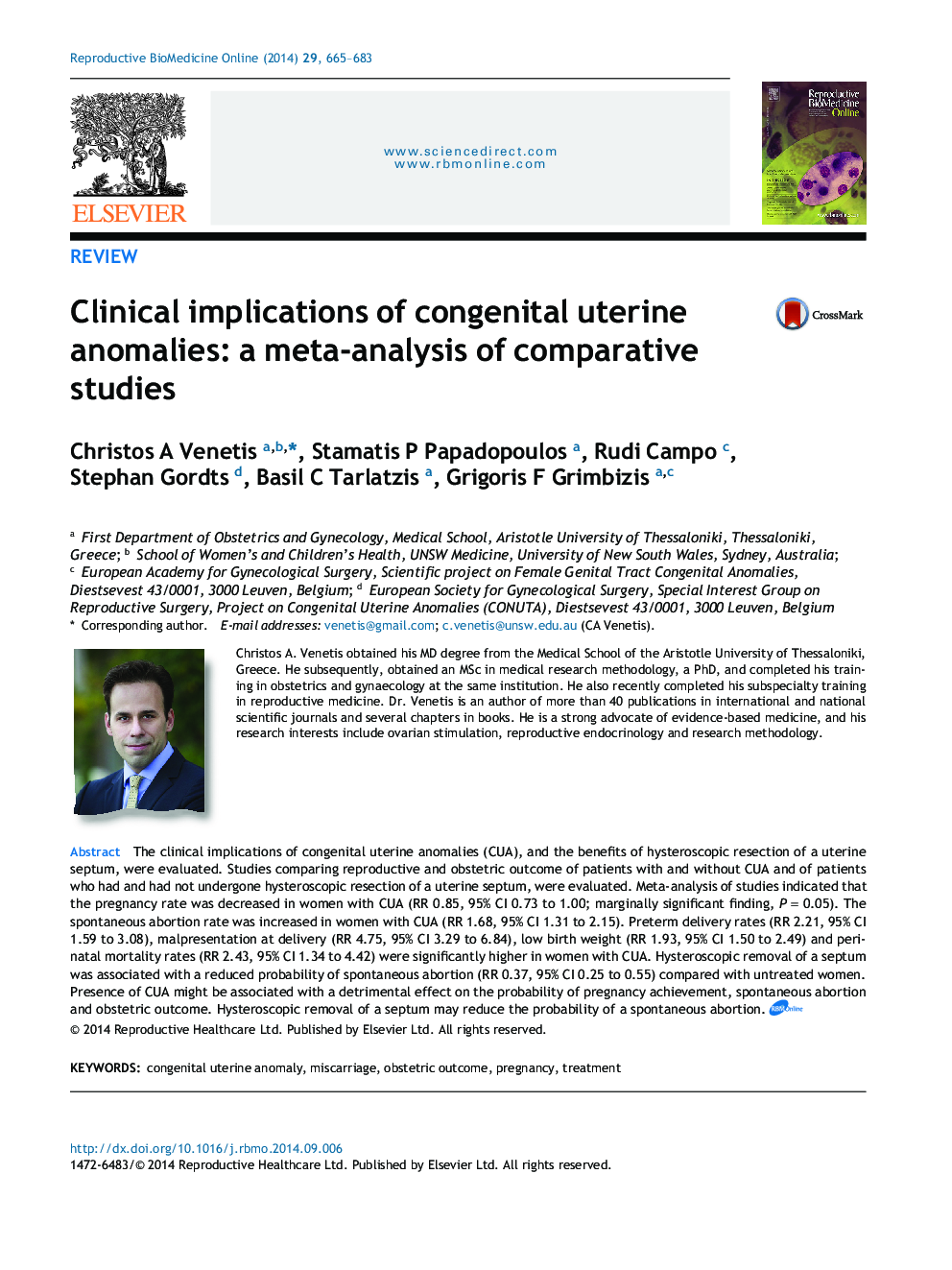| Article ID | Journal | Published Year | Pages | File Type |
|---|---|---|---|---|
| 6188951 | Reproductive BioMedicine Online | 2014 | 19 Pages |
The clinical implications of congenital uterine anomalies (CUA), and the benefits of hysteroscopic resection of a uterine septum, were evaluated. Studies comparing reproductive and obstetric outcome of patients with and without CUA and of patients who had and had not undergone hysteroscopic resection of a uterine septum, were evaluated. Meta-analysis of studies indicated that the pregnancy rate was decreased in women with CUA (RR 0.85, 95% CI 0.73 to 1.00; marginally significant finding, P = 0.05). The spontaneous abortion rate was increased in women with CUA (RR 1.68, 95% CI 1.31 to 2.15). Preterm delivery rates (RR 2.21, 95% CI 1.59 to 3.08), malpresentation at delivery (RR 4.75, 95% CI 3.29 to 6.84), low birth weight (RR 1.93, 95% CI 1.50 to 2.49) and perinatal mortality rates (RR 2.43, 95% CI 1.34 to 4.42) were significantly higher in women with CUA. Hysteroscopic removal of a septum was associated with a reduced probability of spontaneous abortion (RR 0.37, 95% CI 0.25 to 0.55) compared with untreated women. Presence of CUA might be associated with a detrimental effect on the probability of pregnancy achievement, spontaneous abortion and obstetric outcome. Hysteroscopic removal of a septum may reduce the probability of a spontaneous abortion.
